Why do many people call direct mail “junk”? Because most is.
But sending sloppy junk to people is really a form of personal insult. It says you don’t care.
Here’s where people go wrong – and how you can make your messages work much, much better.
1. Not taking it seriously
Direct mail is not exciting or “sexy” like TV, so people treat it like a poor relation to advertising.
But how many of the TV spots you saw in the last 24 hours do you recall? How many made you do something?
Yet it is very hard to ignore something that comes through your door with your name on it.
If it’s good it is remembered for weeks and people will think more favourably of your brand. (For one fmcg client a single postcard improved brand perceptions by 10%).
And if it’s persuasive it makes people act.
So invest the time, money and talent to get it right.
Illustration: Wall Street Journal mailing. This mailing made over $1.25 billion in over 30 years. Do you know any TV spot that did that?
2. Failure to test
“If you can’t measure it, you can’t manage it”.
One small change in a mailing, website or ad can literally double response.
Most advertisers have no real idea how well their advertising works. Few even measure. Wise direct marketers can test on small money before they spend big money. Not to do so is folly.
Illustration: These two letters say exactly the same thing. Only the type face is different. The one on the bottom got 60% more replies.
3. Not aiming at the right people.
The database is the heart of direct marketing. Even a brilliant mailing will fail if sent to the wrong people. Even a dull one can do well to the right ones. Getting the right names – and checking them – is crucial.
Illustration: This letter shows how NOT to do it. If they had looked at their database, they would have known which car we owned, how long I had been a customer – and addressed me by name in the salutation.
4. Trying to be clever
People have better things to do than look for entertainment in their direct mail. Relevance is what matters.
Illustration A: The envelope message which is offering loans is hugely confusing because the creative people are trying to be clever. “Fancy a quickie?” would you think of a loan?
Illustration B: Abbey was trying to sell a loan and used the following envelope. It looks as though they’re selling musical equipment.
5. Being too brief
People imagine brevity helps. But you do not want everybody to read and reply: only those likely to be interested. They will read a lot. Give them every good reason to respond, and overcome all reasonable objections – or you will lose sales.
Illustration: This mailing to sell an expensive holiday had an 8-page letter. It worked well in the U.K. – then got almost exactly the same percentage response in the U.S., where they get six times more mail.
6. Omitting essentials
For your message to work, you need at least five elements. It must gain attention, usually by offering news of a benefit for the reader.
It must then get the reader interested, which is done by elaborating on the opening. Never gain attention with one promise and then start talking about something different.
But interest alone is not enough. People buy for emotional reasons. You must stimulate desire by enthusing about the benefits. You must paint word pictures; show how the prospects will get what they want – or avoid what they don’t
People are sceptical, so you must next convince. Here many marketers are too lazy. You must use customer testimonials, test results, newspaper comment, statistics, examples… and clear, worthwhile guarantees.
But all that effort is wasted if you do not get action. You must ask firmly and repeatedly for a reply. A good example is this ending to a mailing, written 70 years ago.
Let nothing, absolutely nothing, interfere with immediate action. A change for the better justifies no delay. Don’t watch others make money which you can make. Be up and doing now. Some other time may be too late. Place your order and application this very minute. Take the action now which means more money next week, independence next year.
Remind them why they should act; restate the benefits; give a time after which they won’t get what you offer. You are also wise to offer an incentive. They always pay if appropriate.
These steps may not be in that order, but if you miss any one out you will certainly lose sales.
7. Not having a letter
Direct mail is a personal medium. Sending it out without a letter is like having a store without a salesman. I have sometimes taken brochures out of a mailing –and increased profits.
Here’s what happened for a bank client of mine.
Pack 1: Letter, bits and bobs, brochure
Pack 2: Just a letter
| Qty | £/pack | Enq. | Sales | Profit per thousand mailed | ROI | |
| 1 | 20,849 | 1.29 | 1.87% | 3.99% | £279 | £216 |
| 2 | 20,853 | 0.67 | 2.25% | 3.93% | £277 | £411 |
Pack 2 was almost twice as profitable as pack 1 – at 90%.
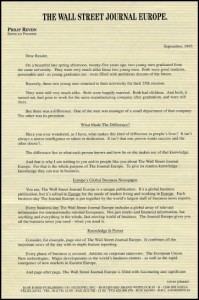


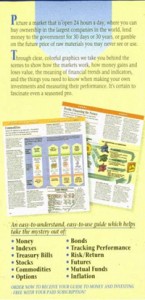

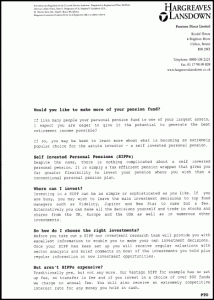
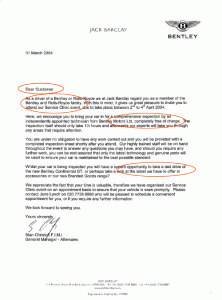
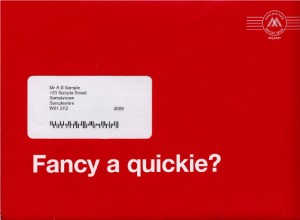

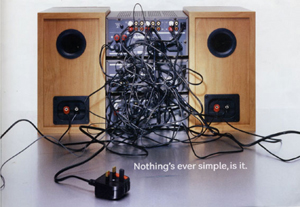

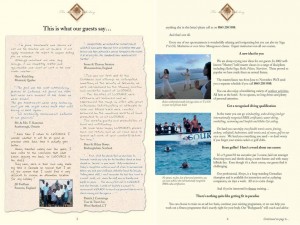
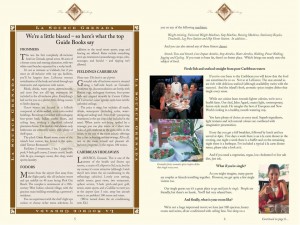


[…] If your creative sucks, try his 7 deadly sins and how to improve your results. […]
this information is very helpful and I really w
ant to learn more.
I think there’s nothing wrong with being clever IF it catches your attention in a relevant way and gets you to read on ~ if it doesn’t catch my attention and it starts off with something incredibly boring and obvious it’ll be more likely to go into the bin. I don’t think creativity has to clash with being relevant and effective; if anything creativity should be able to help it.